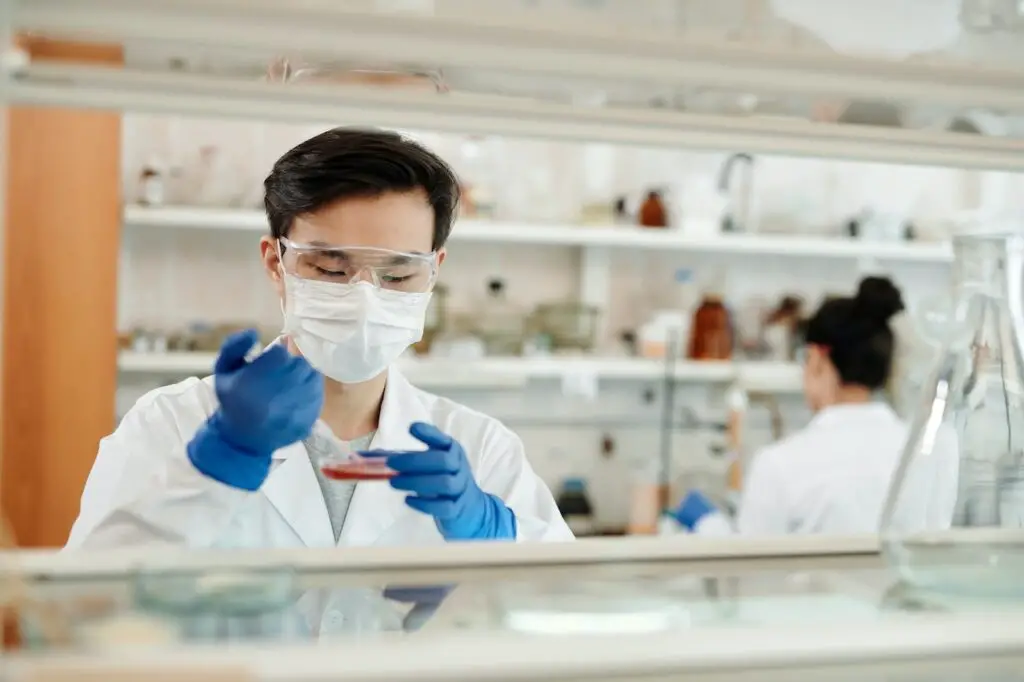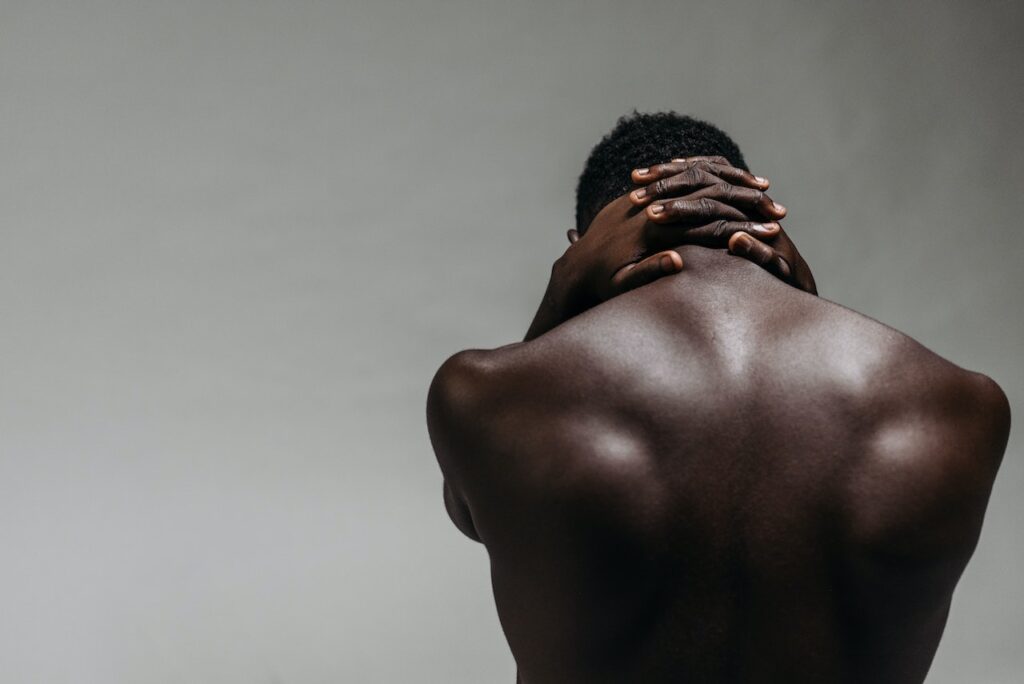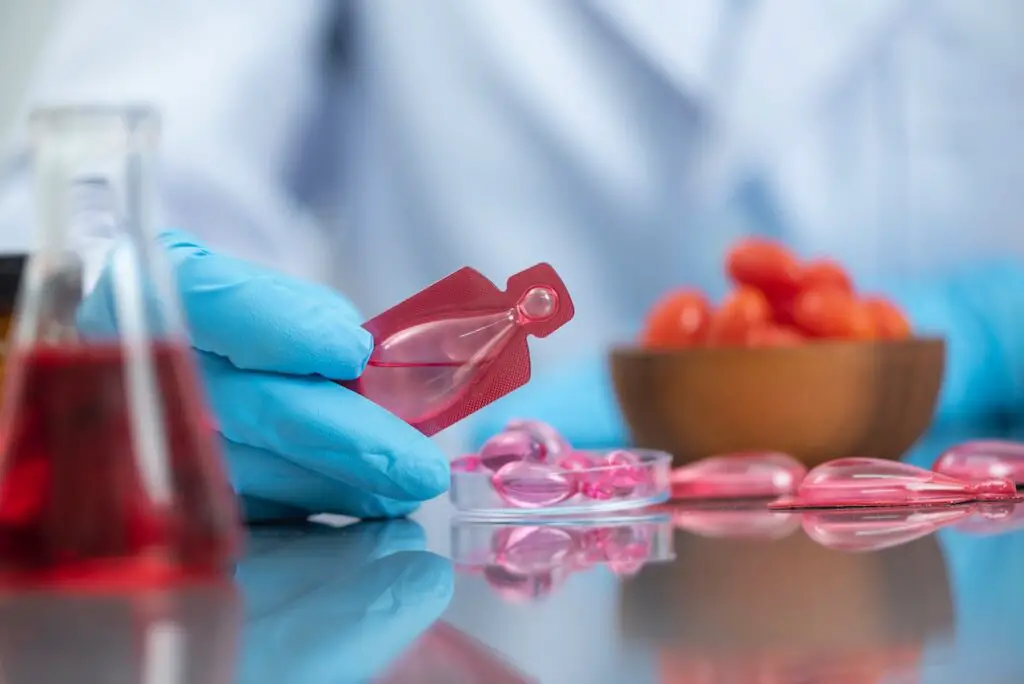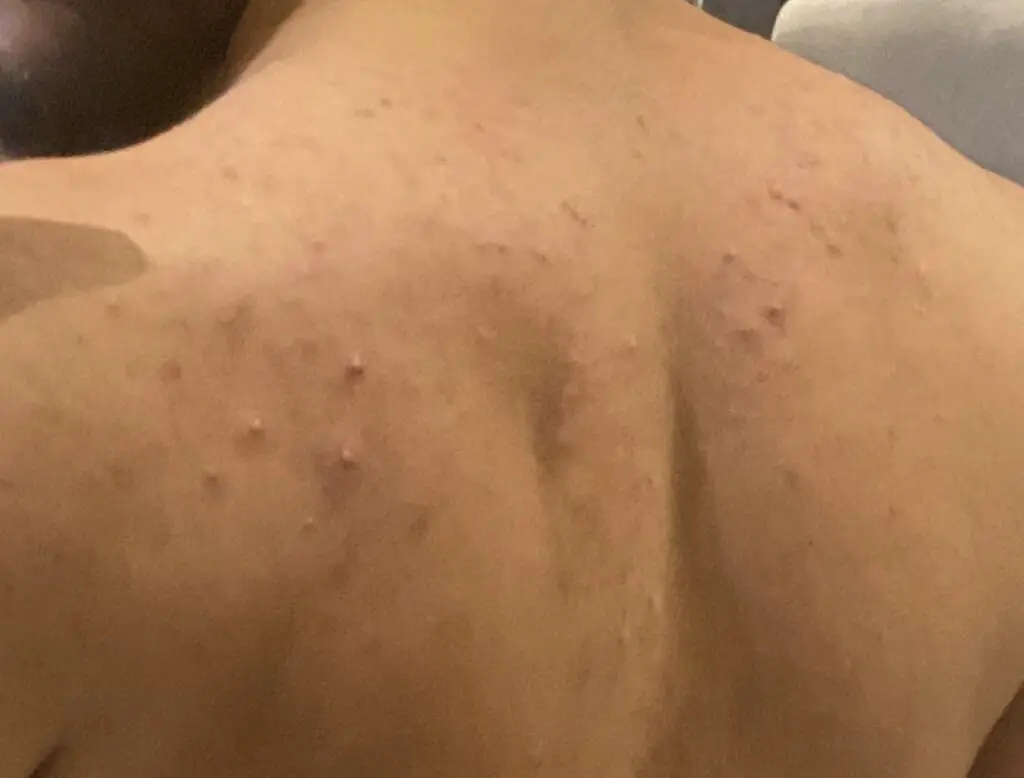Acne is a common skin condition that affects many individuals, but it’s not limited to the face. If you’ve ever experienced breakouts on your back, you’re not alone. Bacne, or back acne, can be just as troublesome and persistent as facial acne. In this article, we’ll explore effective dermatologist-approved treatments and strategies to help you get rid of bacne and achieve clearer skin.
Bacne refers to the occurrence of acne on the back, including the upper and lower back, shoulders, and even the buttocks. It can manifest as pimples, blackheads, whiteheads, or cysts. Bacne is often caused by the same factors that contribute to facial acne, such as excessive oil production, hormonal imbalances, sweat, and friction. However, the skin on the back is thicker and has larger pores, making it more prone to clogged pores and breakouts.
What is Bacne?
Bacne, short for “back acne,” refers to the occurrence of acne on the back. Just like facial acne, bacne can appear as pimples, blackheads, whiteheads, or even cysts on the skin. It occurs when hair follicles on the back become clogged with dead skin cells, excess oil, and bacteria, leading to inflammation and the formation of acne lesions.
Bacne can be caused by various factors, including hormonal imbalances, excessive oil production, sweat, friction from clothing, or a buildup of skincare products. It can be bothersome and affect one’s self-confidence, particularly during warmer months when exposing the back is more common. However, with the right treatments and skincare regimen, bacne can be effectively managed and minimized.

Related: The Benefits of Collagen Supplements for Skin, Hair, and Nails
Causes of Bacne
Excessive Oil Production
The sebaceous glands on the back can produce an excessive amount of oil, leading to clogged pores and the formation of bacne. Hormonal changes, stress, and certain medications can contribute to increased oil production.
Hormonal Imbalance
Hormonal imbalances, such as those experienced during puberty, menstruation, or hormonal disorders, can trigger the overproduction of sebum, resulting in bacne breakouts.
Sweat and Friction
Sweating and friction caused by tight clothing or backpacks can irritate the skin on the back, leading to the development of acne. The combination of sweat, dead skin cells, and bacteria can clog pores and cause bacne.

Related: The Best Men’s Grooming Products for Oily Skin
Prevention Tips
Preventing bacne is easier than treating existing breakouts. By adopting a few simple habits, you can minimize the chances of bacne formation.
Cleansing Routine
Maintaining a consistent and effective cleansing routine is vital for managing bacne. Start by choosing a gentle cleanser specifically formulated for acne-prone skin. Look for ingredients like salicylic acid or benzoyl peroxide, which can help unclog pores and reduce inflammation. When cleansing your back, use lukewarm water and gently massage the cleanser onto the skin using your fingertips or a soft brush.
Avoid scrubbing too harshly, as it can irritate the skin and worsen bacne. After rinsing off the cleanser, pat your back dry with a clean towel. Remember to cleanse your back twice a day, in the morning and before bed, to remove excess oil, sweat, and impurities that can contribute to bacne formation.
Exfoliation
Regular exfoliation is crucial for preventing and treating bacne. It helps remove dead skin cells, unclog pores, and promote cell turnover. Choose a gentle exfoliating scrub or a chemical exfoliant containing salicylic acid to effectively exfoliate your back. Massage the product onto damp skin in gentle circular motions, paying attention to areas prone to bacne. Be cautious not to over-exfoliate, as it can cause irritation. Aim to exfoliate your back once or twice a week to maintain a clear and smooth complexion.
Related: The Importance of Nail Care for Men’s Skincare
Wearing Breathable Fabrics
Opting for breathable fabrics can significantly contribute to managing bacne. When choosing clothing, prioritize fabrics like cotton or moisture-wicking materials. These fabrics allow better air circulation, reduce sweat accumulation, and minimize friction against the skin. Avoid tight or restrictive clothing that can trap moisture and heat, as they can exacerbate bacne breakouts.
Instead, opt for looser-fitting garments that provide ventilation. Additionally, consider wearing lightweight and breathable activewear during workouts or physical activities to prevent sweat buildup on the back. By selecting the right fabrics, you can reduce the likelihood of bacne formation and promote healthier skin.

Dermatologist-Approved Treatments
When bacne persists or becomes severe, seeking professional help from a dermatologist is recommended. They can prescribe targeted treatments and procedures to effectively address the condition. Here are some dermatologist-approved treatments for bacne:
Topical Medications
Dermatologists may prescribe topical medications containing ingredients like benzoyl peroxide, salicylic acid, or retinoids to reduce inflammation, unclog pores, and kill bacteria. These medications are available in various forms, including gels, creams, lotions, or sprays.
Oral Medications
In more severe cases of bacne, dermatologists may recommend oral medications as part of the treatment plan. Antibiotics, such as tetracycline or erythromycin, can help combat the bacterial infection associated with bacne and reduce inflammation. Hormonal therapies, like oral contraceptives or spironolactone, may be prescribed for individuals with hormonal imbalances contributing to bacne.
These medications work by regulating hormone levels and controlling excessive oil production. It’s important to note that oral medications for bacne may have potential side effects and require close monitoring by a healthcare professional. Always consult with a dermatologist to determine the most suitable oral treatment option based on your individual needs.
related: Is Skin Cancer Melanoma Affecting More Men than Women?
Laser Therapy
Laser therapy is a cutting-edge treatment option that can be highly effective in addressing bacne. Photodynamic therapy (PDT) and intense pulsed light (IPL) are common laser treatments used by dermatologists. These procedures work by targeting and destroying acne-causing bacteria, reducing inflammation, and promoting skin healing. The laser energy stimulates collagen production, which helps improve skin texture and minimize the appearance of acne scars.
Chemical Peels
Chemical peels offer an effective solution for treating bacne and improving skin texture. During a chemical peel, a solution containing specific acids, such as glycolic acid or salicylic acid, is applied to the back. This solution gently exfoliates the skin, removing dead cells, unclogging pores, and reducing acne lesions.
Chemical peels also help even out skin tone and diminish the appearance of acne scars. The intensity of the peel can be adjusted based on the severity of bacne. Dermatologists can determine the appropriate peel strength and customize the treatment to suit individual needs, ensuring optimal results with minimal downtime.
Microdermabrasion
Microdermabrasion is a non-invasive treatment that can effectively address bacne. During the procedure, a handheld device with a diamond-tipped wand or tiny crystals is used to exfoliate the skin gently. This process removes dead skin cells, unclogs pores, and stimulates collagen production.
By promoting cell turnover, microdermabrasion helps improve the overall texture and appearance of the skin, including reducing bacne breakouts. The treatment is generally well-tolerated and requires no downtime. Multiple sessions may be recommended for optimal results.
Related: The Benefits of Zinc for Men’s Skincare
Home Remedies for Bacne
If you prefer natural remedies or want to complement dermatologist-approved treatments, several home remedies may help in managing bacne. It’s important to note that these remedies may not work for everyone, and individual results may vary.
Tea Tree Oil
Tea tree oil is a popular natural remedy for bacne due to its antimicrobial and anti-inflammatory properties. When applied topically, it can help reduce inflammation, kill acne-causing bacteria, and promote healing. To use tea tree oil for bacne, dilute a few drops in a carrier oil like jojoba oil or coconut oil, then apply it to the affected areas using a cotton pad or clean fingertips.
Allow the oil to absorb into the skin before rinsing. It’s important to do a patch test first to check for any adverse reactions, and if irritation occurs, discontinue use. Incorporating tea tree oil into your skincare routine can provide a natural and gentle approach to managing bacne.
Related: The Benefits of Tea Tree Oil for Men’s Skincare
Apple Cider Vinegar
Apple cider vinegar has antimicrobial properties that can help kill acne-causing bacteria. Dilute apple cider vinegar with water and apply it to your back using a cotton pad or a spray bottle to help balance the skin’s pH and reduce bacne.
Aloe Vera
Aloe vera gel has soothing and anti-inflammatory properties, which can help calm inflamed bacne lesions. Apply pure aloe vera gel to your back and leave it on for a few minutes before rinsing it off.
Skincare Tips for Bacne
In addition to treatments and home remedies, adopting the right skincare routine can significantly improve bacne. Here are some skincare tips specifically tailored for managing bacne:
Use Non-Comedogenic Products
Using non-comedogenic products is essential for individuals dealing with bacne. Non-comedogenic products are specifically formulated to avoid clogging the pores, reducing the risk of acne breakouts. Look for skincare and body care products, such as cleansers, moisturizers, and sunscreens, that are labeled as non-comedogenic.
These products are designed to be lightweight, oil-free, and won’t exacerbate bacne. By choosing non-comedogenic options, you can ensure that your skincare routine supports clear and healthy skin while minimizing the likelihood of pore blockage and bacne formation.
Don’t Over-Scrub
When dealing with bacne, it’s important to avoid over-scrubbing the skin. Scrubbing too harshly or using abrasive tools can cause irritation and damage to the skin, worsening bacne breakouts. Instead, opt for gentle cleansing techniques using your fingertips or a soft brush.
Apply light pressure and use circular motions to cleanse the affected areas. By being gentle, you can effectively cleanse the skin without causing unnecessary friction or inflammation, allowing the skin to heal and reducing the chances of bacne flare-ups.
Related: How to Get Rid of Acne: Men’s Skincare Tips and Tricks
Moisturize Regularly
Regular moisturization is crucial for managing bacne. Contrary to popular belief, moisturizing doesn’t make acne worse. In fact, it helps maintain the skin’s moisture balance and prevent excessive oil production. Look for oil-free and non-comedogenic moisturizers specifically formulated for acne-prone skin.
Applying moisturizer after cleansing helps keep the skin hydrated, supports its natural barrier function, and reduces the risk of dryness or irritation. Incorporating moisturization into your skincare routine can promote overall skin health and contribute to the effective management of bacne.
Lifestyle Changes to Help with Bacne
Apart from skincare and treatments, making certain lifestyle changes can also contribute to managing bacne effectively:
Eat a Balanced Diet
Maintaining a healthy and balanced diet can positively impact your skin’s health. Include plenty of fruits, vegetables, whole grains, and lean proteins in your diet. Avoid excessive consumption of processed foods, sugary snacks, and greasy foods, as they can contribute to inflammation and worsen bacne.
Related: Why a balanced diet is important for men?
Stay Hydrated
Drinking an adequate amount of water throughout the day is essential for overall skin health. Proper hydration helps flush out toxins from the body and keeps the skin hydrated and supple.
Manage Stress Levels
Stress can trigger hormonal imbalances and increase oil production, leading to bacne breakouts. Practice stress management techniques such as meditation, exercise, or engaging in hobbies to reduce stress levels and promote healthier skin.
When to See a Dermatologist
While mild bacne can often be managed with over-the-counter products and home remedies, it’s important to consult a dermatologist if:
Bacne is severe, painful, or spreading rapidly.
Home remedies and over-the-counter treatments haven’t provided significant improvement.
Bacne is leaving scars or dark spots on the skin.
A dermatologist can assess your specific condition, provide a personalized treatment plan, and help prevent potential scarring or long-term skin damage.
Related: The Best Men’s Grooming Products for Blackheads
Conclusion
Bacne can be frustrating and impact your self-confidence, but there are several effective treatments and strategies to help you get rid of it. From dermatologist-approved treatments and home remedies to adopting a proper skincare routine and making lifestyle changes, a comprehensive approach can lead to clearer, healthier skin. Remember, consistency and patience are key when dealing with bacne. Consult a dermatologist for personalized advice and treatment options tailored to your specific needs.
FAQs
Can bacne be completely cured?
While there is no definitive cure for bacne, it can be effectively managed and reduced with the right treatments, skincare routine, and lifestyle changes. Consistency and adherence to recommended strategies are crucial for achieving clearer skin.
Are there any side effects of dermatologist-approved treatments for bacne?
Some dermatologist-approved treatments, such as oral medications or laser therapy, may have potential side effects. It’s important to discuss these risks with your dermatologist and weigh the benefits against any potential adverse effects.
How long does it take to see results from bacne treatments?
The time required to see results can vary depending on the severity of bacne and the chosen treatment. In general, it can take several weeks to months to notice significant improvements. Consistency with treatment and following the recommended skincare routine are key for achieving desired results.
Are there any natural remedies that can replace dermatologist-approved treatments?
Natural remedies, such as tea tree oil or apple cider vinegar, may provide some benefits in managing bacne. However, they may not be as effective as dermatologist-approved treatments, especially for severe cases. It’s best to consult a dermatologist for a comprehensive evaluation and personalized treatment plan.
Can stress cause or worsen bacne?
Stress can contribute to hormonal imbalances and trigger acne breakouts, including bacne. Managing stress levels through relaxation techniques and self-care practices can help minimize the impact of stress on your skin.

